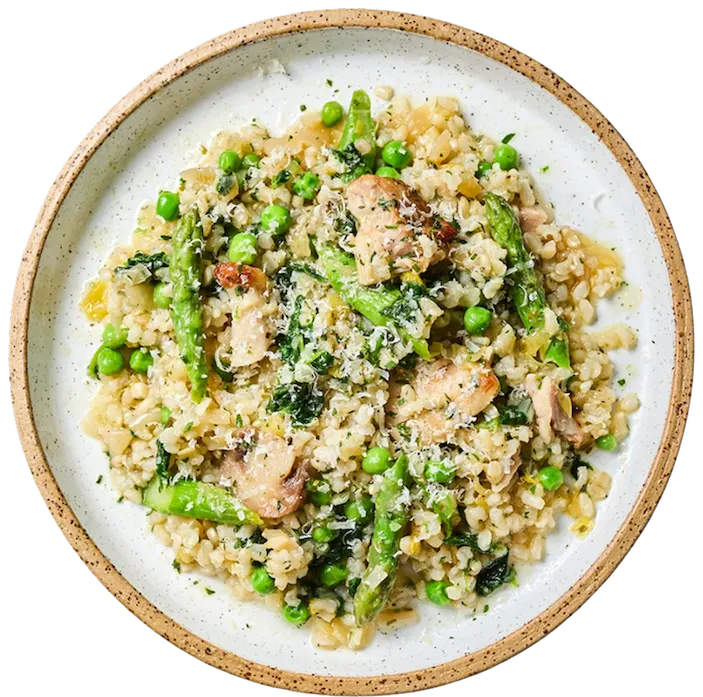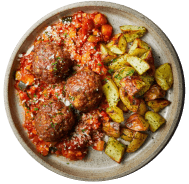Do Dietitian's Recommend Drinking Juices?
Is Drinking Juice Good For You?
Juicing is becoming a big trend - but is drinking your fruits and vegetables as juices and smoothies really better for you? Is it better to enjoy fruits and vegetables raw or cooked? Whole or juiced? Our dietitians answer your questions, considering factors such as low FODMAP diets and scientific evidence, and offer practical tips on how to enjoy juicing in a healthy and balanced way.
A dietitian's Verdict on juicing
Vegetables and fruit are good for you – fact. However, is shoving them into a machine to extract their juice good for you? Should we be running out to buy the latest juicer or will a handful of berries suffice? And what’s the deal with cold-pressed juice? Is it really better for you? If you do have a juice, what’s the best juice to have?
Is whole better than juice?
Eating more fruit and vegetables is one of the best things you can do to improve your health. They are packed with vitamins and minerals, rich in fibre and other vital plant nutrients called phytochemicals. Time and time again research has shown that a diet high in vegetables and fruit protects against a multitude of diseases such as heart disease, cancer and obesity.
The World Health Organisation (WHO) and current UK guidelines encourage eating at least five portions (a portion is around 80g in weight) of fruit and vegetables a day. In reality it can be difficult for many of us to meet this target. Recent surveys found that only 15% of us in the UK actually achieve our daily 5-a-day.
Could juicing could be one easy way to make a dent in your 5-a-day target? Unfortunately, juices can only count as a 1 of your 5-a-day no matter how much you drink. This is because juicing loses most of valuable fibre found in the whole fruit. It also increases the free sugars, both which are kept intact before the juicing process. This can lead to an unwanted peak in blood sugar levels compared to eating the whole fruit and vegetables intact. The good news is that some smoothies/ blended juices can count as two portions depending on the amount of pulp (fibre) they contain. So, the type of juice you drink matters.
Juicing explained
I often get asked whether cold-pressed juice is nutritionally superior. To understand the difference in nutrition value of different juices you need to know the machine that was used to make it!
Juicing is a process that extracts the juice from the fruit and vegetables, leaving the rest (i.e. the pulp). The two main types of juicers are the centrifugal juicer and the masticating juicer (cold press).Traditional juicers are centrifugal juicers. Centrifugal juicers use fast-spinning blades to tear apart the fruit and vegetables, but the process also adds some heat (for pasteurization) and exposes ingredients to oxygen. Preservatives can be also added to the juice to inhibit bacteria formation during packaging. Cold-pressed juice on the other hand is extracted using a masticating juicer. Fruits and vegetables are fed into a tube that has a cork screw like blade, which grinds and chews the produce to a paste. A masticating juicer is thought to extracting more juice per piece of produce than the traditional centrifugal juicer hence pressed juices will have more fiber. There is no heat used to preserve cold pressed juices which explains why most cold pressed juices have such a short shelf life.
Blending is when the whole fruit or vegetable is used. Blenders grind, mix or emulsify all of your ingredients together. What you put into a blender is what you consume. You can use anything from a standard hand held blender to higher end full size blenders.
What does the science say?
Whilst there isn't any robust scientific evidence to prove superiority of cold pressed juice, it’s important to remember that a lack of evidence is not absence of evidence!!! We know that the water-soluble vitamins such as vitamin C are heat and oxygen sensitive, so in theory, more nutrients are retained in cold pressed juice because the juice is extracted via pressing instead of requiring high speed blades, and without heat. We also know that pressed juices will typically have more fibre and potentially less “free sugars” than conventional juices as well. However, the key is to become label savvy so that you can compare one juice to another in terms of fibre and sugar.
Recent WHO recommendations state that the average adult’s daily sugar consumption should be halved to six teaspoons of ‘free’ sugars (free sugars being those added by food manufacturers and those sugars found naturally in fruit juice and honey, for example) (2). As a point of reference, one glass (200mls) of 100% pressed apple juice contains 5 teaspoons of sugar (20g), which almost clocks up your daily free sugar intake for the day (3).
But that’s not to say you can’t get into juicing! There is definitely a place for juicing in a balanced diet. For starters it can help make a dent to you 5-a-day target. If you opt for a smoothie/blended juice you can get more bang for your buck in terms of fibre. If you are very active, the sugars in a fruit juice could help push up your blood sugar levels after a hard exercise session. However, for most us, most of the time water is perfectly adequate to keep us well hydrated before and after sport.
And let’s also not forget reaching for a pressed juice can provide a great pick-me-up and energy boost during an afternoon slump which is by far better than reaching for a caffeinated, high sugar and low nutrient item! The key is to maintain the balance between eating whole fruits and vegetables, and drinking them. This way you can retain valuable nutrients without trying to replace one for another.
Top tips if you want to drink juice
If you choose juice, here are three tips on how to make the most of it:
- Go veggie! To reduce the sugar content you should add more vegetable choices and limit your fruit portions to 1-2 per drink. You could also dilute your juice with added water to reduce the sugar load. Reading your label also helps you compare the sugar intake of one juice to the next.
- There is a place and a time for sugar: Fruit based juices will have a higher sugar content, so opt for these choices when your blood sugar needs a boost, for example before or after sport rather than with a breakfast or lunch. The lack of fibre in juice actually allows for easy digestion and absorption meaning that you get a quick hit of nutrients if you need a quick pick-me-up.
- Consider making your own. Invest in a good blender – particularly if you are serious about juicing. A good blender will have a stronger blade that will ensure that your juices retain more pulp and fibre. The blade will also withstand the addition of other ingredients like seeds that need to be broken up for you to get the full nutritional benefits. Have fun experimenting with different vegetables and fruit.
What about if you are on the low FODMAP diet?
Unfortunately most juices are very high in fructose so they are not suitable for the elimination stage of the low FODMAP diet. This includes common juices such as apple juice and berry juices. Some juices are permitted: up to 210ml cranberry juice, 120ml lemon juice, 250ml lime juice and 210ml of tomato juice. It is always advisable that you look at the Monash University FODMAP app for more detailed information regarding maximum safe amounts for different types of juices as Monash University are always revising foods on the app due to new FODMAP analysis.
References
- George T.W., Paterson E., Waroonphan S., Gordon M.H. & Lovegrove J.A. (2012) Effects of chronic consumption of fruit and vegetable puree-based drinks on vasodilation, plasma oxidative stability and antioxidant status. J. Hum. Nutr. Diet. 25: 477-487
- WHO. (2003) Diet, Nutrition and the Prevention of Chronic diseases. Report of a Joint WHO/FAO Expert Consultation. Geneva: World Health Organization
- Department of Health (2011) National Diet and Nutrition Survey: Headline Results from Years 1 and 2 (Combined) of the Rolling Programme 2008/9–2009/10.
related content
more content: General Health
browse our ranges.
choose from one of our ranges or personalise your own menu from 60+ meals.
- low FODMAP

- eat well, live well programme

- gluten free

- high protein

- weight management

- ibs

- lowest calorie

- lower carbs

- mediterranean

- smaller range

- pcos

- lean + lighter

- menopause

- heart healthy

- plans

- full menu

- gift cards
- take the quiz